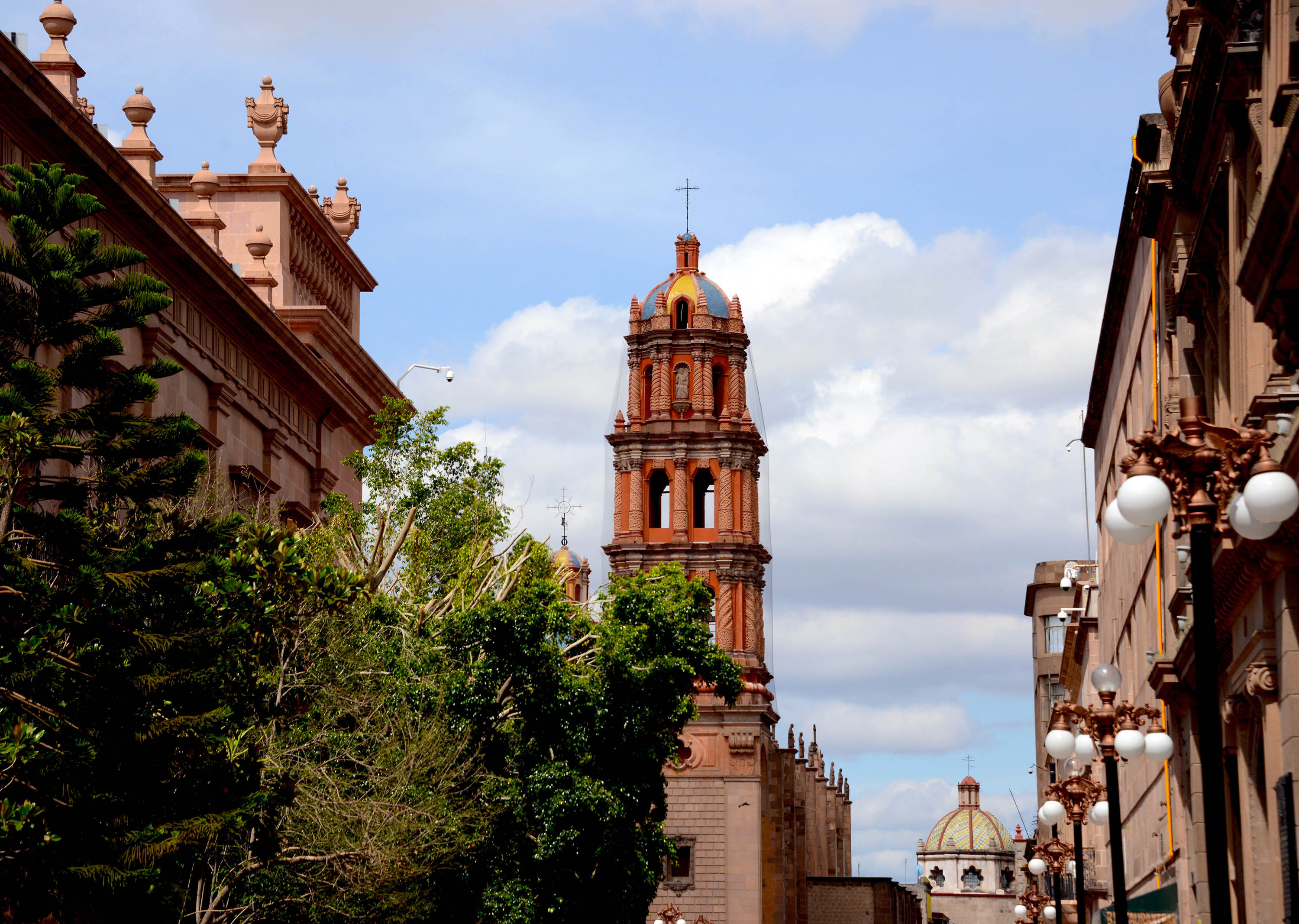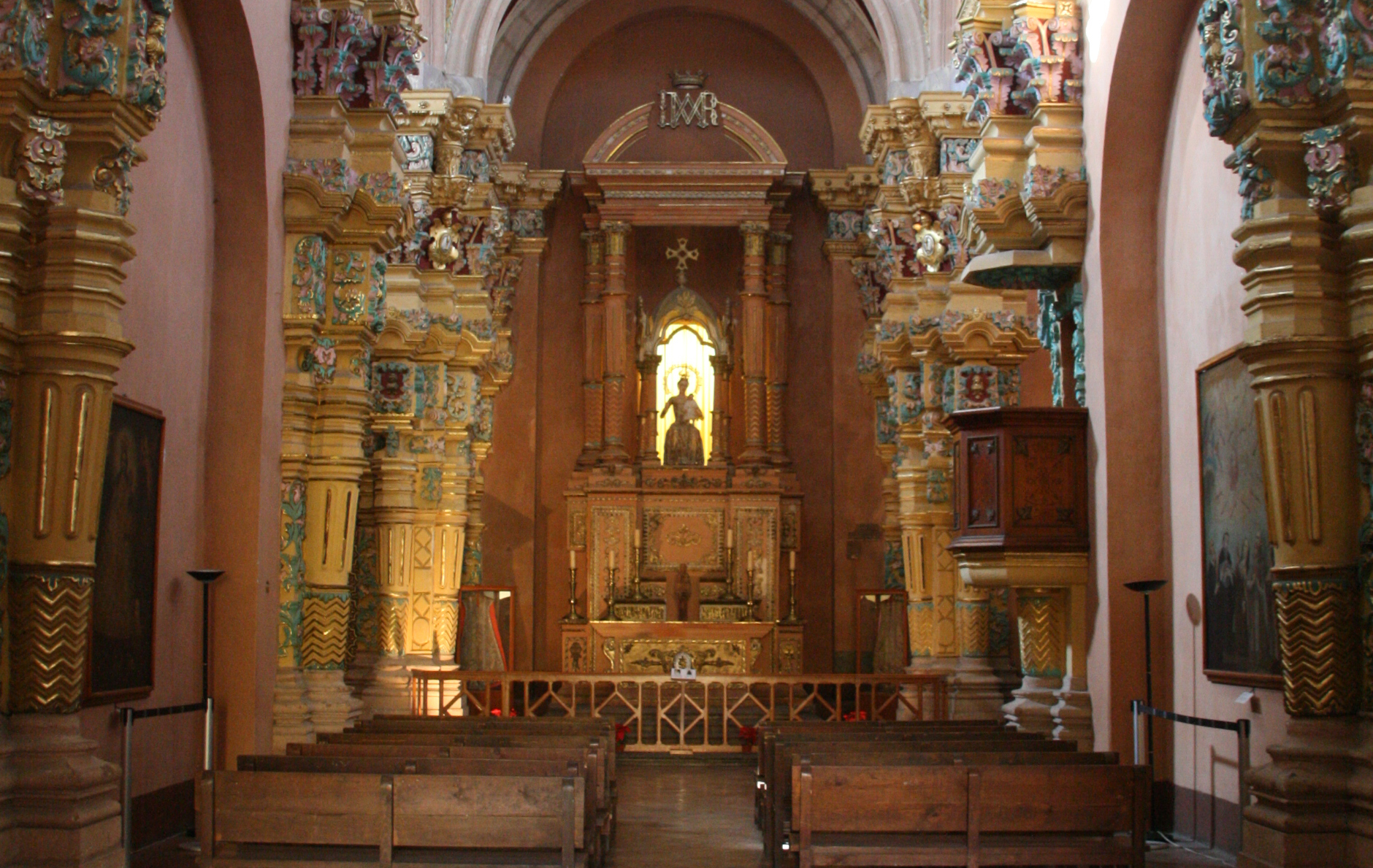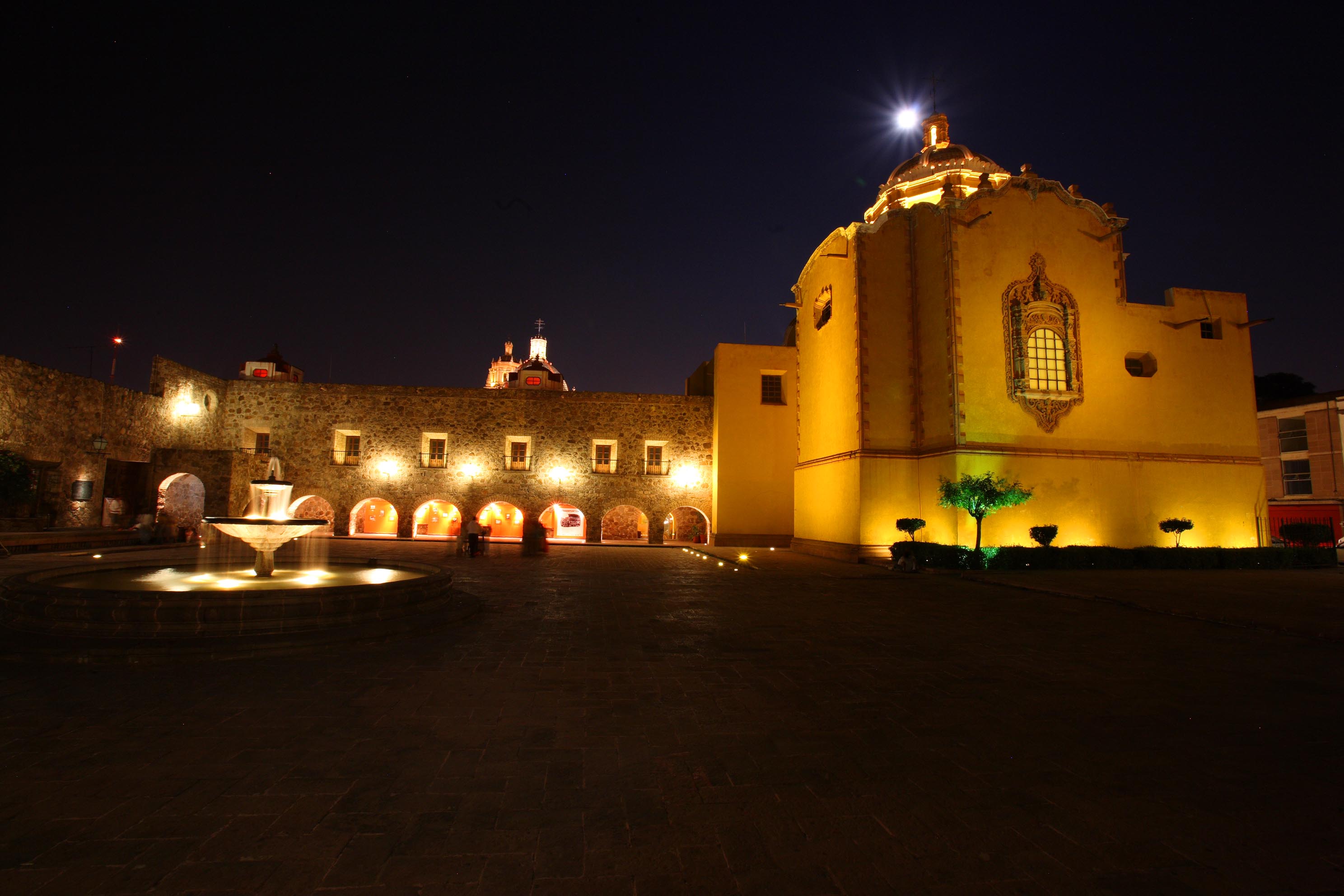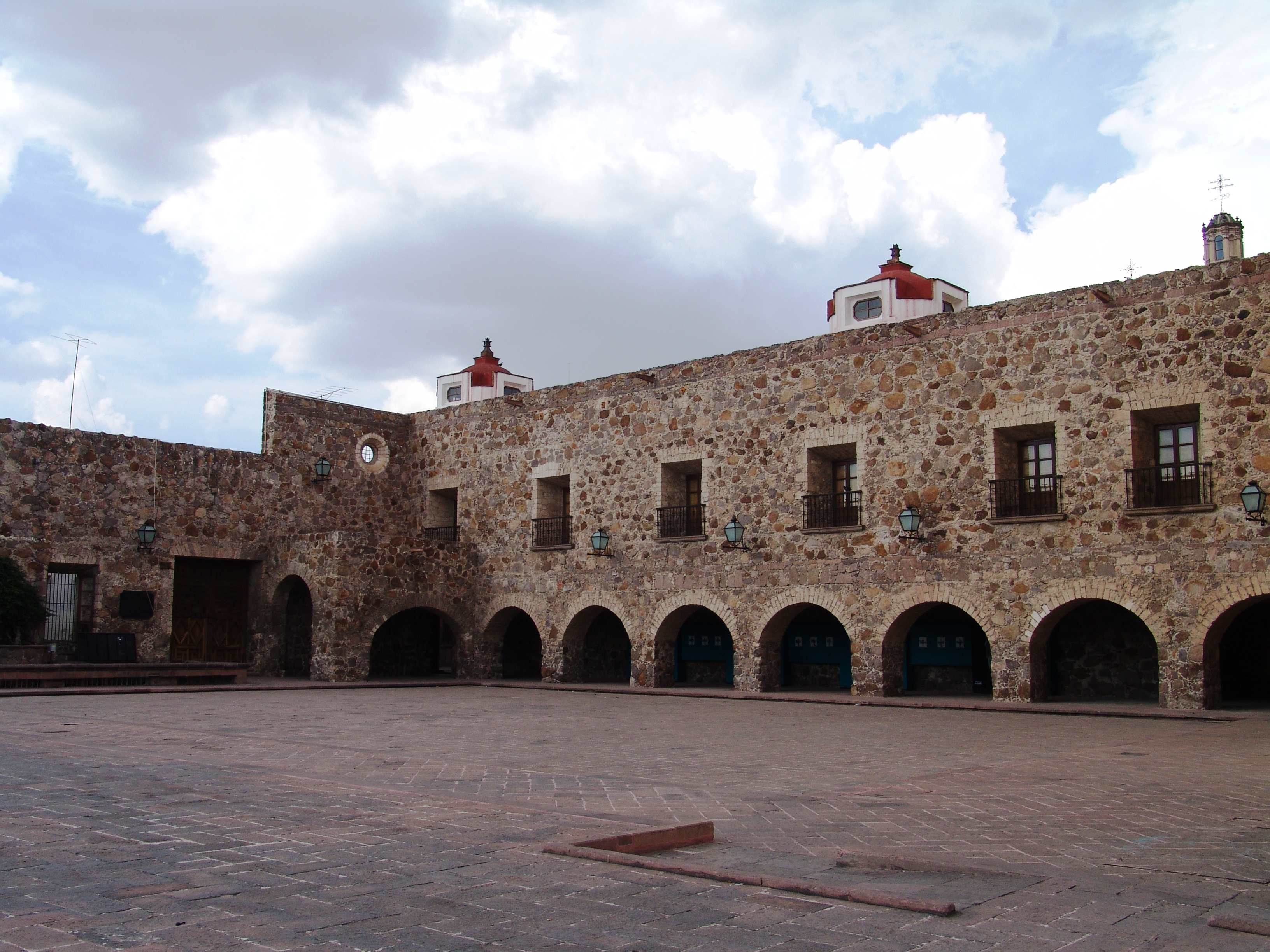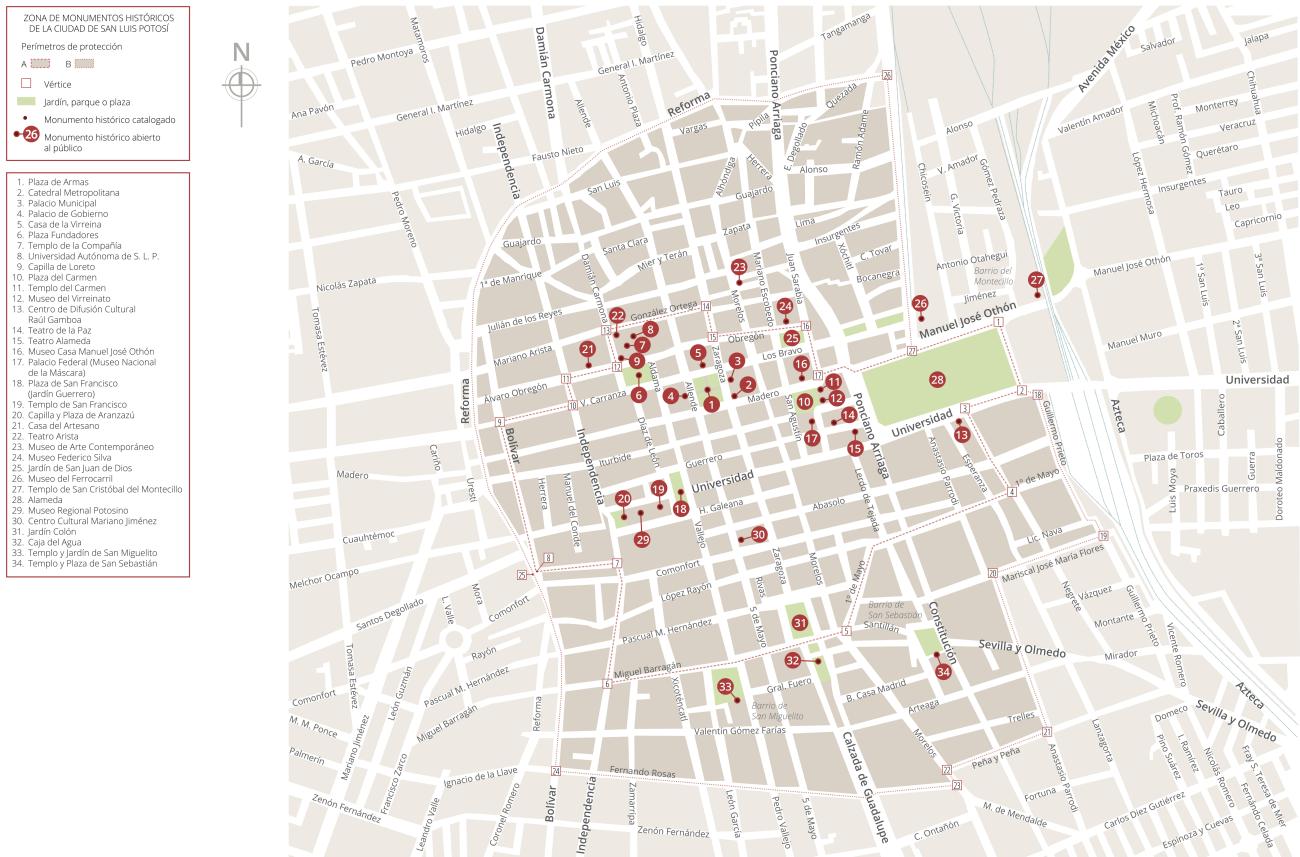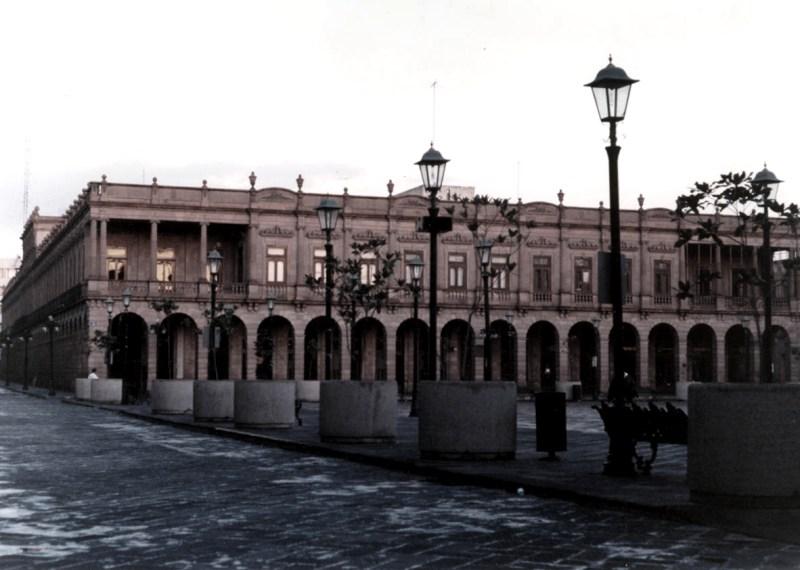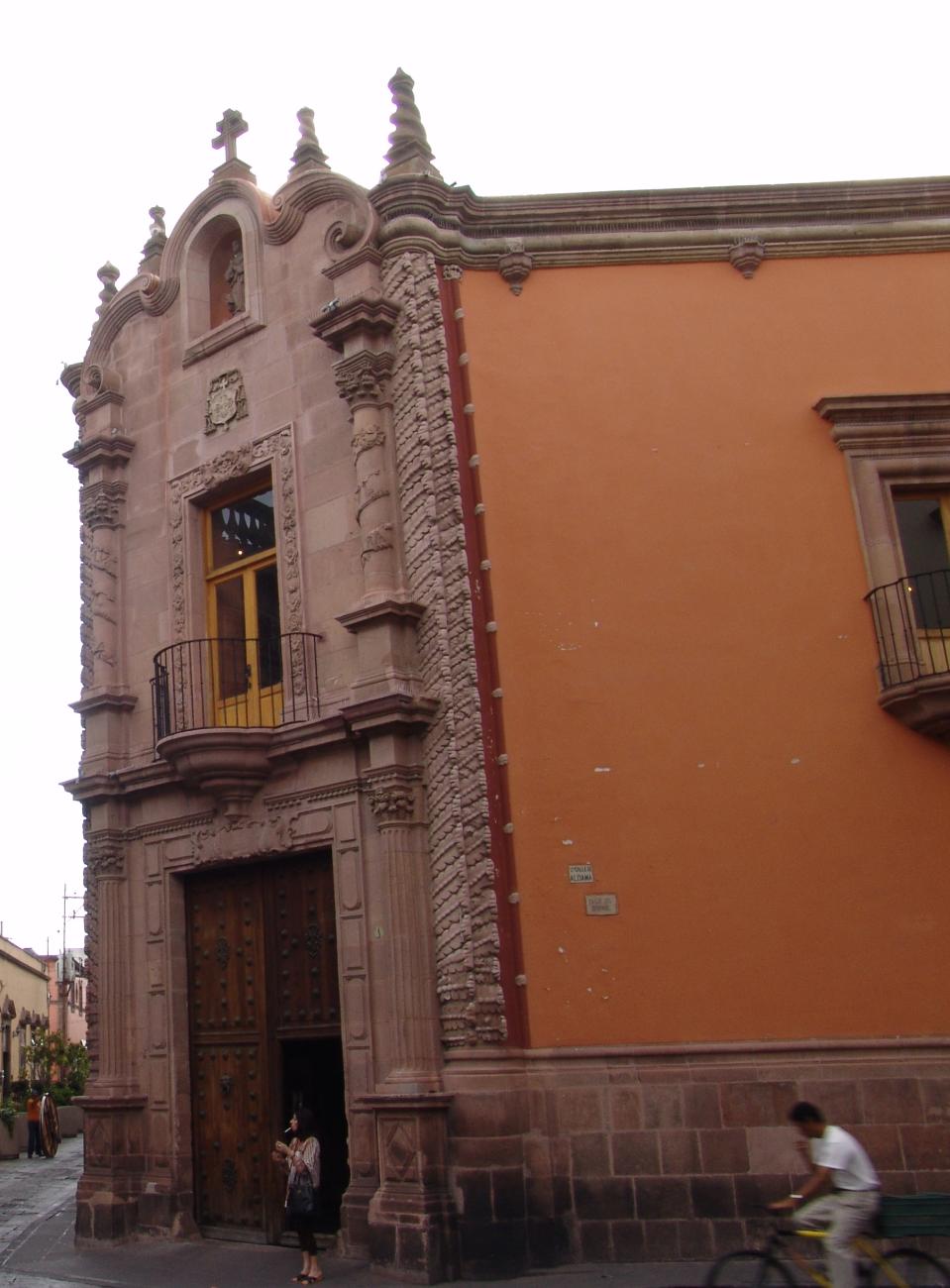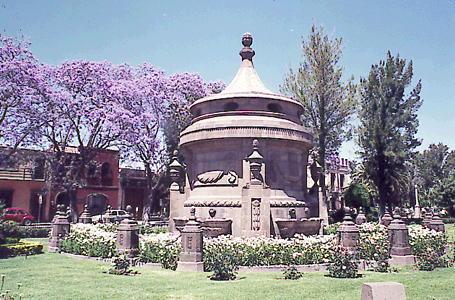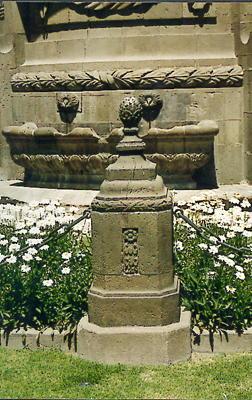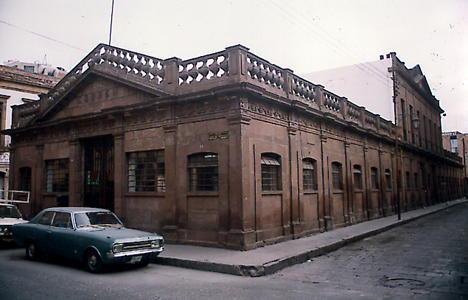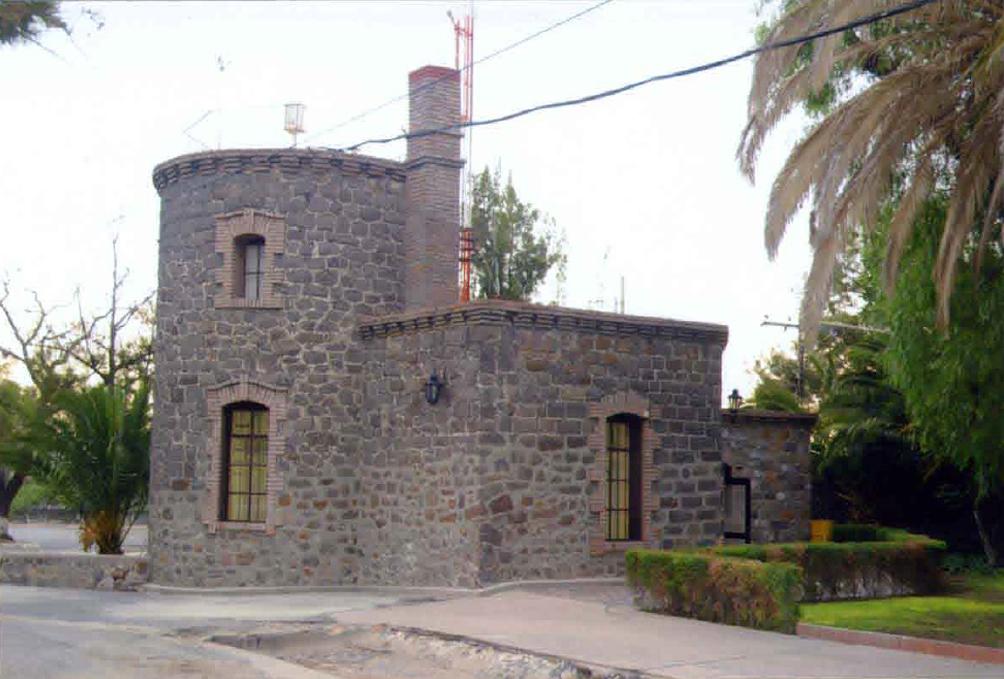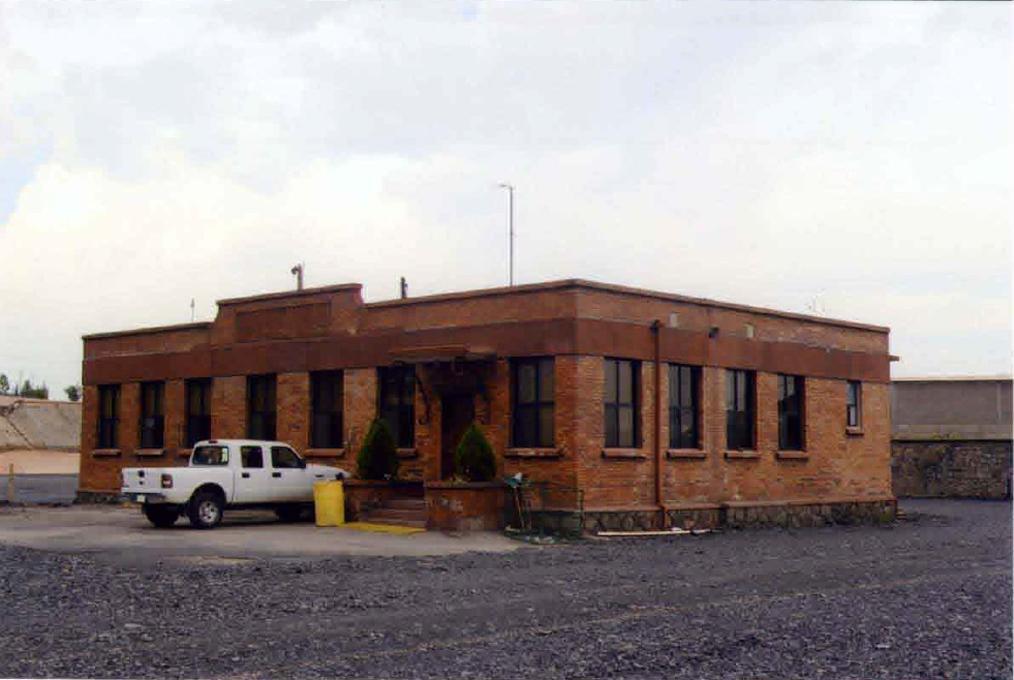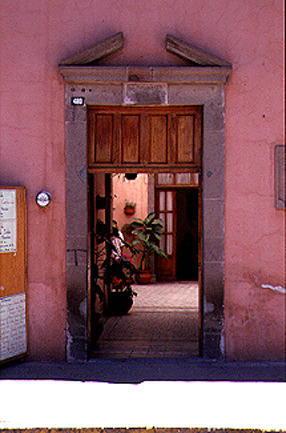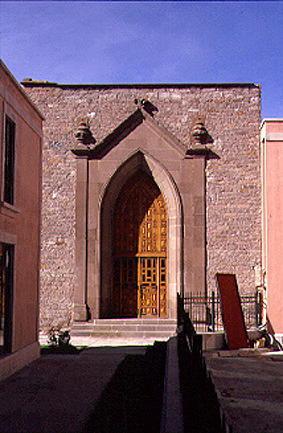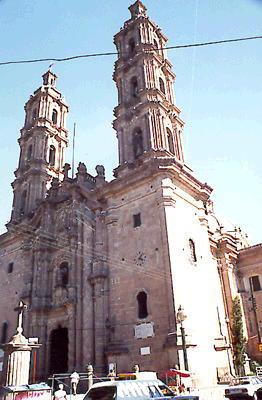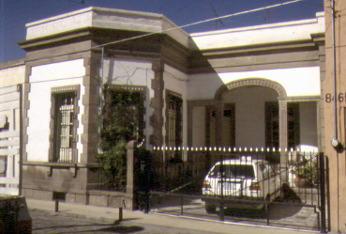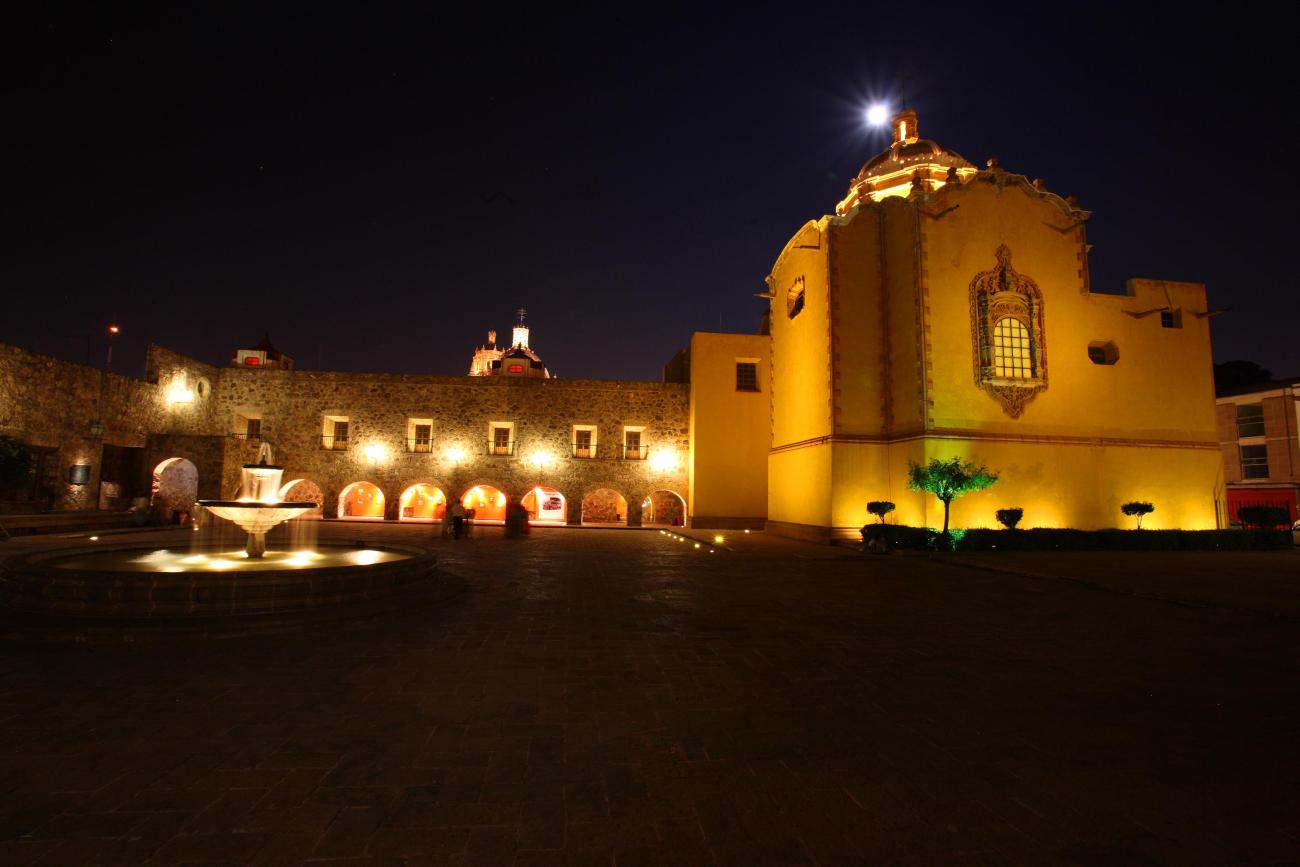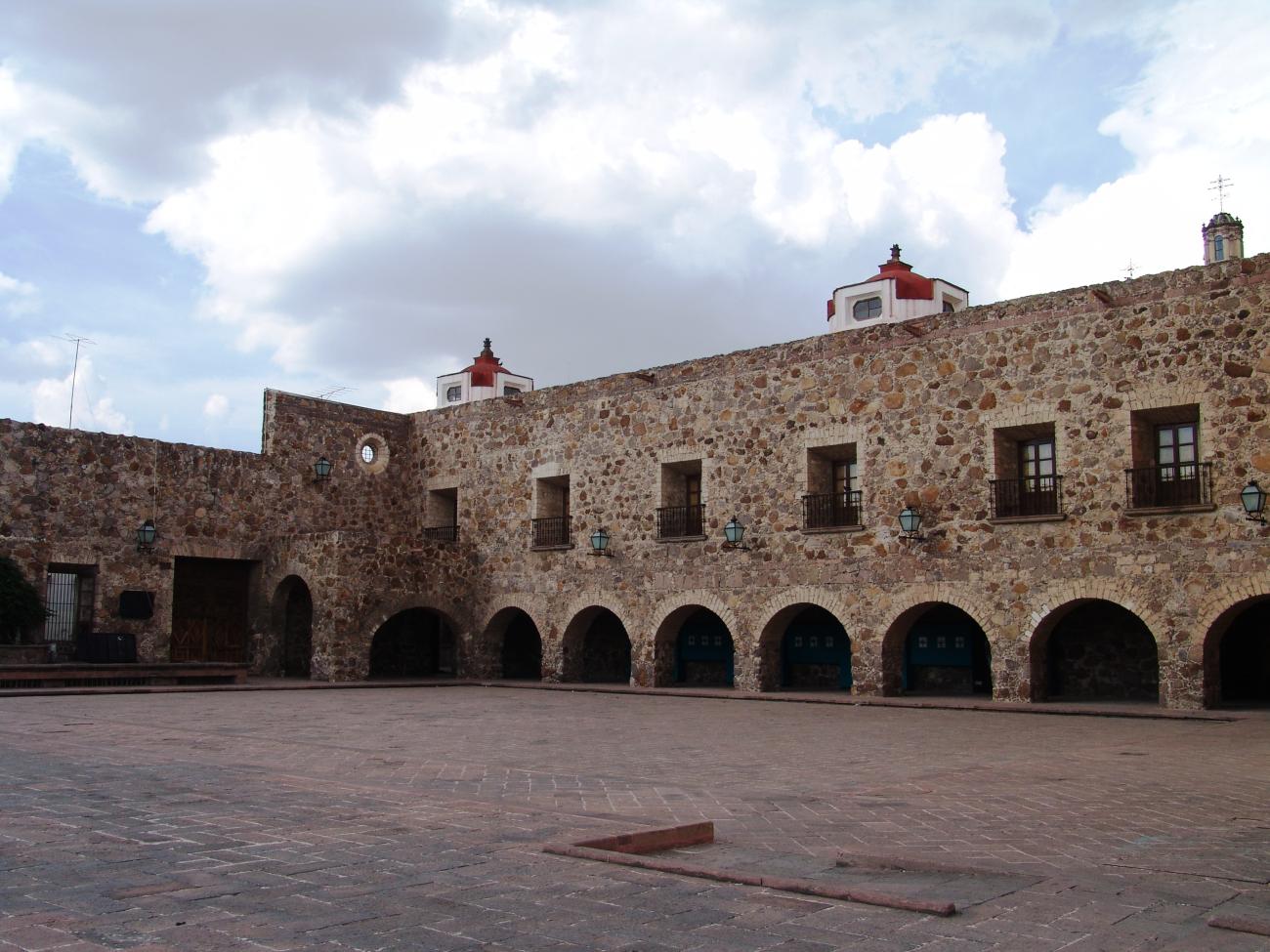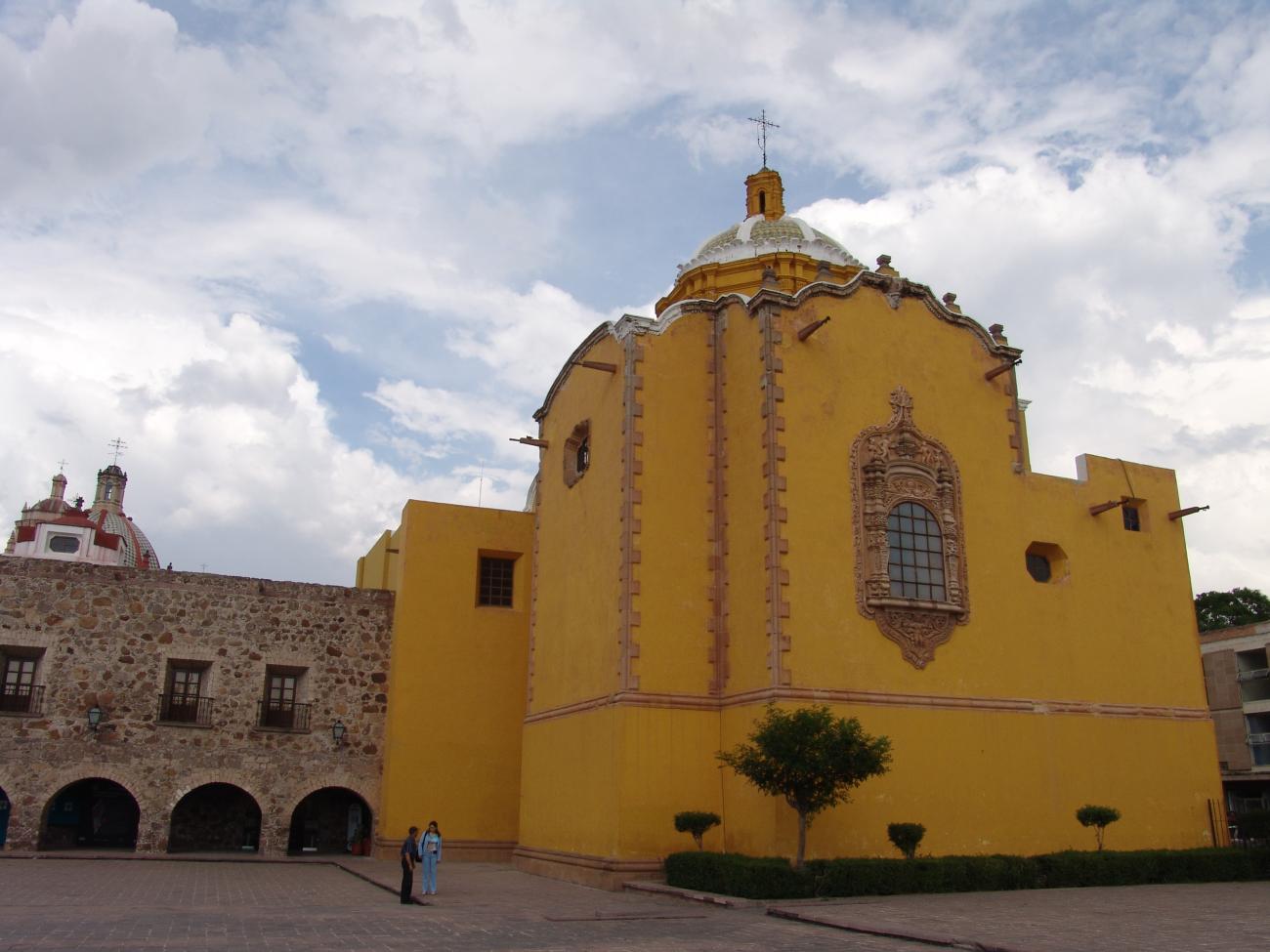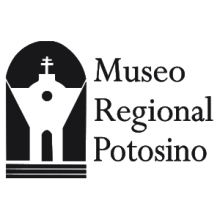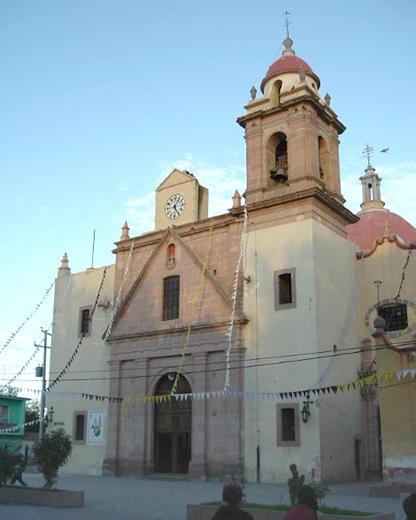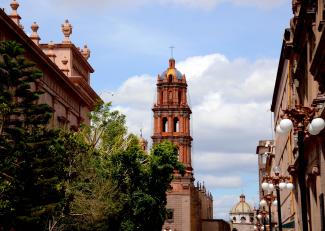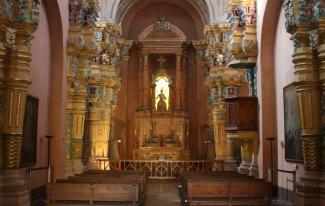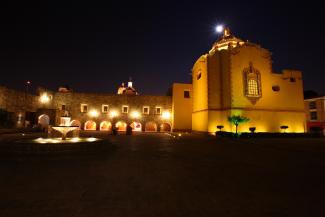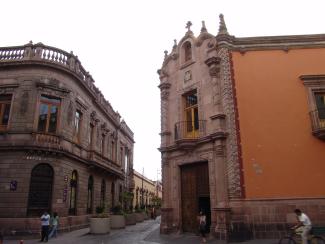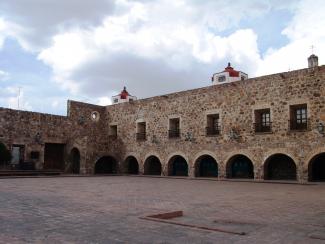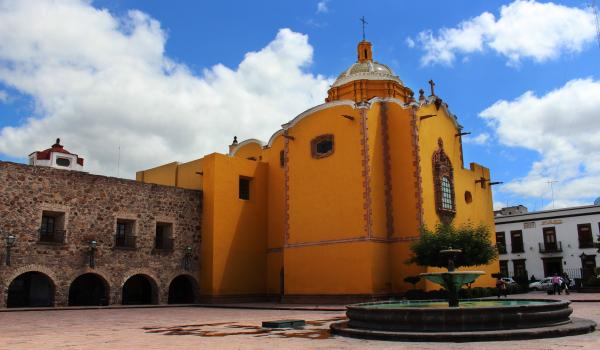San Luis Potosí
Historical Monuments Zone
Abstract
The grandeur of the city of San Luis Potosí derives from its importance as a center for gold and silver mining and as a frontier post for the route into the north of New Spain, which led to its recognition as a key part of the World Heritage cultural itinerary known as the Royal Inland Road or Camino Real de Tierra Adentro.
In its origins this city was a diverse ethnic settlement that brought together Tlaxcaltecas, Otomis, Purépechas, Guachichiles and Spaniards, and it is a significant example of cultural blending in this region of the country. It was founded in 1583, at the site where Friar Diego de la Magdalena had gathered groups of Guachichil indigenous peoples who had first arrived in the region in the 13th century.
San Luis Potosí owes its name to Louis IX, king of France. On 3 November 1592 it was founded as the Pueblo de San Luis Mesquitique; subsequently, on 30 May 1656, the Viceroy Francisco Fernández de la Cueva, Duke of Alburquerque, granted the Pueblo y Minas del Potosí the right to be established as a city. The name Mesquitique was changed to Potosí in reference to the wealth of the mines in the San Pedro mountains, comparable to the Potosí mines in Bolivia.
The first villages were settled over the 16th century, previously separate and now forming the city’s neighborhoods: Tlaxcalilla, Santiago and San Miguelito; to which were added San Sebastián, Tequisquiapan, Montecillo, San Juan de Guadalupe and Tenería in the 16th century, La Soledad in the 18th century and Saucito in the 19th century.
San Luis Potosí became the largest Intendencia of all New Spain, and by 1787 it encompassed the jurisdiction of the present-day states of San Luis Potosí, Tamaulipas, Nuevo León, Coahuila and Texas. It underwent extensive social, political and above all economic development to become the third-most important city in all the viceroyalty, behind only Mexico and Puebla.
In the 19th century, the city was a primordial player in the republican cause, leading President Benito Juárez to declare it the capital of the country in 1863 and again in 1867. On this second occasion, it was in the city hall that the death sentence of Ferdinand Maximilian von Habsburg was signed.
Thanks to its historical, political and cultural value, the city of San Luis Potosí was declared a Zone of Historical Monuments on 19 December 1990; the conservation perimeters A and B bound an area of 1.93 km2 comprising 218 city blocks with building constructed between the 16th and 19th centuries. Of these, 18 were intended for religious worship, including most notably the Cathedral of Nuestra Señora de la Concepción, the Antiguo Seminario Conciliar, the former monasteries and churches of San Francisco and San Agustín; the churches of Nuestra Señora del Rosario, San Juan de Dios, the Sagrario or the Compañía, Loreto, San Miguel Arcángel, El Carmen, San José, Espíritu Santo, Nuestra Señora de la Salud, San Sebastián and its annexes, and that of the Tercera Orden, together with the chapels of Aránzazu and Guadalupe.
Other historical buildings were intended for the purposes of public education, welfare, service and embellishment, or use by the civil and military authorities, including: the seat of government and city hall, the Royal Treasury, the La Paz Theater, the central university building, the monumental palace and the water tower.
In the year 2010, San Luis Potosí was enrolled as a UNESCO World Heritage Site.
Catedral de Nuestra Señora de la Expectación
In 1596, Juan de Zavala signed a contract with Juan de Butrago to build a new church. By 1608, the construction was ready to be roofed. It was blessed on August 25, 1609, and dedicated to the Virgin of the Expectation.
Catedral de Nuestra Señora de la Expectación
In 1596, Juan de Zavala signed a contract with Juan de Butrago to build a new church. By 1608, the construction was ready to be roofed. It was blessed on August 25, 1609, and dedicated to the Virgin of the Expectation.

Edificio Ipiña
19th-century building, constructed by Octaviano L. Cabrera Hernández, designed by commission of his father-in-law, Don Encarnación Ipiña, in 1906.
Edificio Ipiña
19th-century building, constructed by Octaviano L. Cabrera Hernández, designed by commission of his father-in-law, Don Encarnación Ipiña, in 1906.

Casa de la Caja Real
The current building is a reconstruction of an earlier one, likely built after 1653. Only remnants of the original structure remain, which were uncovered during the restoration carried out in 1998.
Casa de la Caja Real
The current building is a reconstruction of an earlier one, likely built after 1653. Only remnants of the original structure remain, which were uncovered during the restoration carried out in 1998.
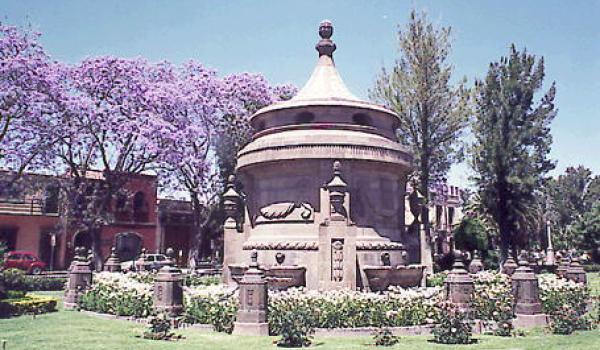
Caja de Agua "La Conservera"
By 1825, the city was experiencing serious water scarcity issues, prompting Guadalupe de los Reyes to commission the creation of the Sanctuary fountains, which channel water down from the Cañada del Lobo.
Caja de Agua "La Conservera"
By 1825, the city was experiencing serious water scarcity issues, prompting Guadalupe de los Reyes to commission the creation of the Sanctuary fountains, which channel water down from the Cañada del Lobo.
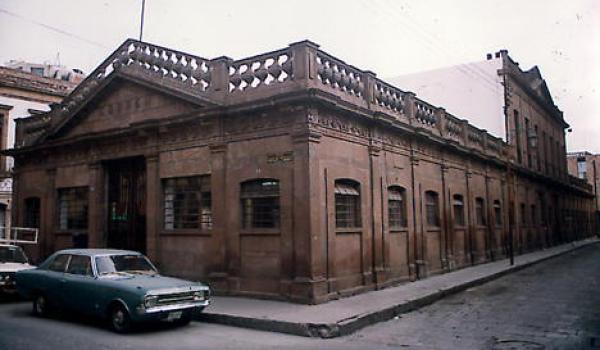
Museo de Arte Contemporáneo
A 19th-century building that has served various purposes such as a meat market, post office, and finally, a Contemporary Art Museum after being acquired by the state government. The museum was inaugurated on August 14, 2009, and is located within the Perimeter B of the Historic Monuments Zone.
Museo de Arte Contemporáneo
A 19th-century building that has served various purposes such as a meat market, post office, and finally, a Contemporary Art Museum after being acquired by the state government. The museum was inaugurated on August 14, 2009, and is located within the Perimeter B of the Historic Monuments Zone.
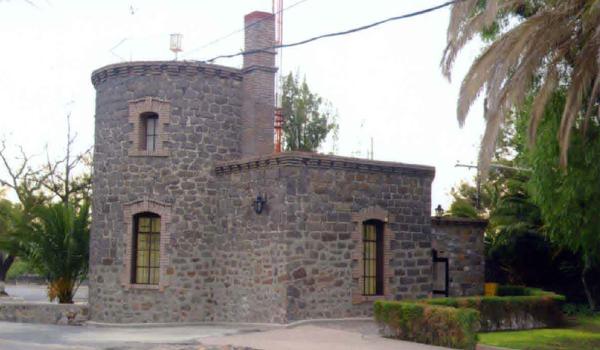
Torreón de Vigilancia Oriente
A building constructed in the late 19th century as part of the industrial complex of the Mexican Metallurgical Company.
Torreón de Vigilancia Oriente
A building constructed in the late 19th century as part of the industrial complex of the Mexican Metallurgical Company. It belonged to a security system that included several watchtowers and a stone wall, which was partially demolished when the facilities expanded after the company was acquired by ASARCO.
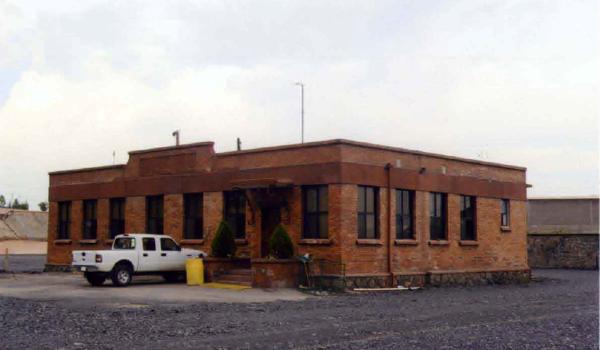
Oficinas de Ingenieros
In 1891, the Compañía Metalúrgica Mexicana was established; this building served administrative functions.
Oficinas de Ingenieros
In 1891, the Compañía Metalúrgica Mexicana was established; this building served administrative functions.
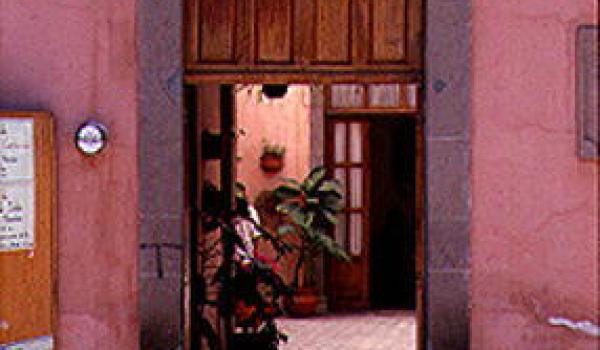
Casa de la Cultura
19th-century building.
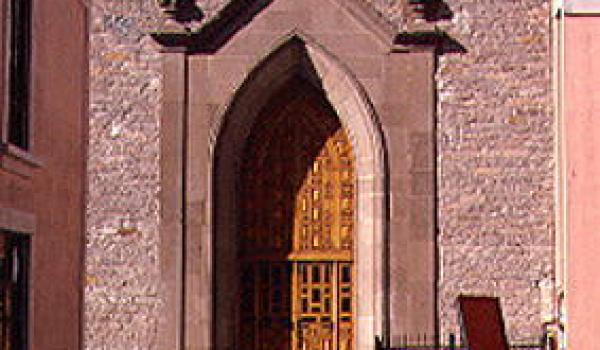
Capilla
19th-century building.
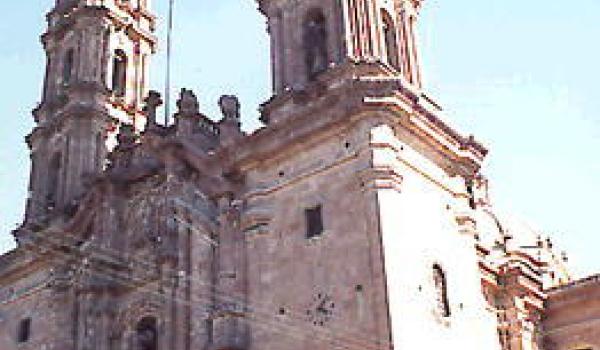
Basílica de Guadalupe
The first stone of this building was laid on February 13, 1656. The chapel was dedicated on January 19, 1662, the day on which the image of Our Lady of Guadalupe, brought by the captain of the Real Caja of San Luis Potosí, Castro y Mampaso, was moved there.
Basílica de Guadalupe
The first stone of this building was laid on February 13, 1656. The chapel was dedicated on January 19, 1662, the day on which the image of Our Lady of Guadalupe, brought by the captain of the Real Caja of San Luis Potosí, Castro y Mampaso, was moved there.
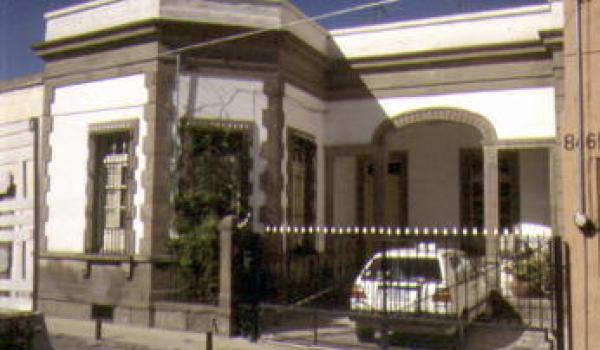
Biblioteca
19th-century building.
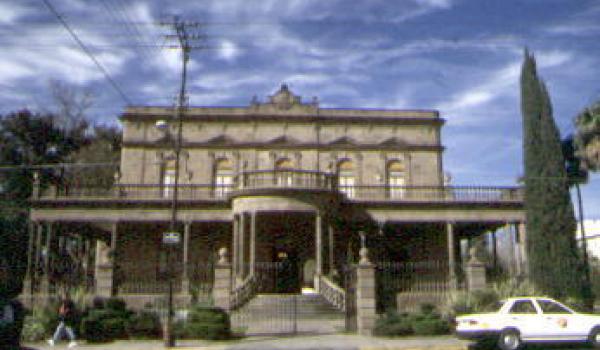
Centro Potosino de Convenciones
Building from the 19th century, designed by architect Jacobo Cossio.
Centro Potosino de Convenciones
Building from the 19th century, designed by architect Jacobo Cossio.
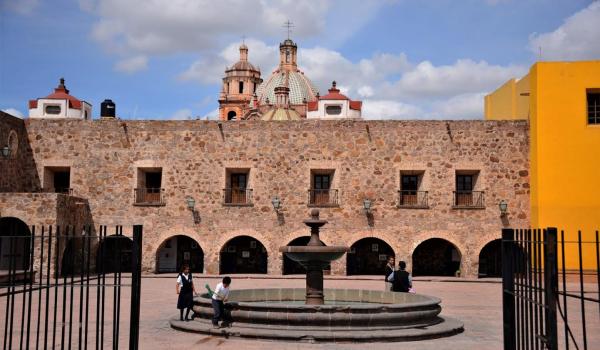
Convento de San Francisco
17th-century building. Records indicate that between 1748 and 1749 it underwent renovations, which included the construction of the choir area, offices, sacristy, anteroom, and the Aranzazú chapel.
Convento de San Francisco
17th-century building. Records indicate that between 1748 and 1749 it underwent renovations, which included the construction of the choir area, offices, sacristy, anteroom, and the Aranzazú chapel.
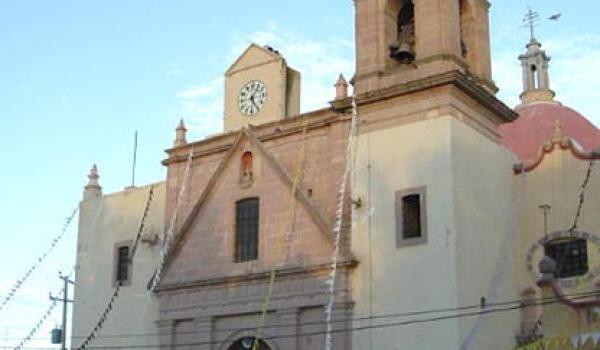
San Francisco de Asís
18th-century building, with an inscription on the western face of the bell tower that reads "Enero 26 de 1848".
San Francisco de Asís
18th-century building, with an inscription on the western face of the bell tower that reads "Enero 26 de 1848".

